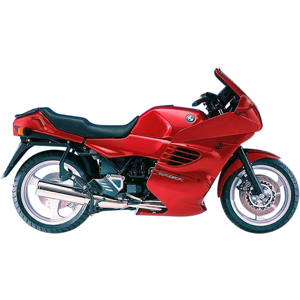BMW K 1100 RS (1992–1997): The Flying Brick That Redefined Sport Touring
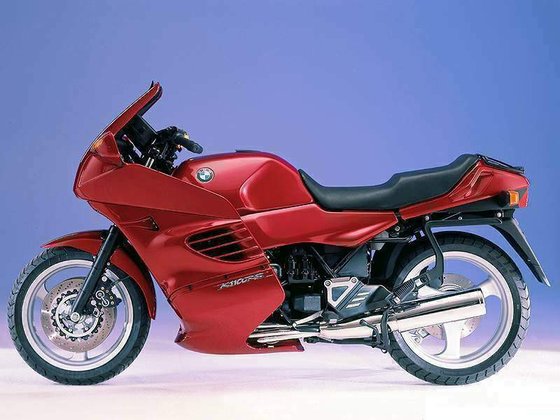
When BMW introduced the K 1100 RS in 1992, it wasn’t just launching another motorcycle—it was reaffirming its reputation for engineering audacity. Dubbed the “Flying Brick” for its horizontally inclined inline-four engine, this sport tourer blended Teutonic precision with a dash of rebellion. Over a week-long test ride, I discovered why this generation remains a cult favorite among riders who value substance over trends.
Engine Performance: Torque, Tenacity, and a Touch of Vibration
At the heart of the K 1100 RS lies its 1,093 cc inline-four engine, a liquid-cooled powerhouse producing 100 HP (74 kW) at 7,500 RPM and a robust 107 Nm (78.9 ft-lb) of torque at 5,500 RPM. BMW’s signature laydown engine configuration—mounted longitudinally and tilted 30 degrees—keeps the center of gravity low, aiding stability without sacrificing character.
Thumb the electric starter, and the engine awakens with a subdued growl. Below 4,000 RPM, vibrations reverberate through the bars and pegs, a reminder of its ’90s mechanical soul. But push past that threshold, and the motor smooths out, pulling relentlessly to its 8,500 RPM redline. The torque curve is flat and forgiving, with 75% of peak torque available at just 2,000 RPM, making it a highway overtaking maestro.
The Bosch Motronic fuel injection (a novelty in its era) delivers crisp throttle response, though it lacks the razor-sharp urgency of modern ride-by-wire systems. Fifth gear feels slightly short-legged—you’ll yearn for a sixth on long autobahn runs—but the shaft drive eliminates chain maintenance hassles, a boon for tourers.
Handling: A Dance Between Grace and Heft

Weighing 268 kg (591 lbs) wet, the K 1100 RS isn’t a featherweight. Yet, its tubular space frame (with the engine as a stressed member) and 41.4 mm telescopic forks lend surprising agility. The front end feels planted mid-corner, while the Paralever single-sided swingarm minimizes shaft-driven squat under acceleration.
On sweeping bends, the RS exudes confidence, but tight switchbacks reveal its bulk. The 18-inch rear wheel and 160/60 tire demand deliberate steering inputs, and grounding the centerstand isn’t uncommon when pushing hard. Suspension is softly sprung, prioritizing comfort over sportiness—perfect for devouring miles but less so for track-day antics.
Braking, however, is a highlight. Dual 305 mm front discs with four-piston calipers (optional ABS in later models) offer strong, progressive bite. The system lacks the initial grab of modern radial setups but inspires confidence in wet conditions—a trait I appreciated during an unexpected downpour.
Comfort and Ergonomics: The Long-Haul Specialist
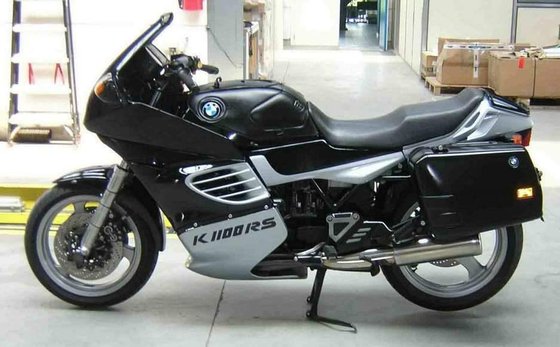
Slide into the 800 mm (31.5-inch) seat, and the K 1100 RS reveals its touring DNA. The riding position strikes a Goldilocks balance: slightly leaned-forward bars, relaxed legroom, and a plush saddle that’s all-day compliant. Compared to the couch-like BMW K 1100 LT, the RS feels sportier, yet it’s far kinder to your spine than a Ducati 900SS.
The fairing deserves praise. Its adjustable windscreen (a novelty in the ’90s) deflects most turbulence, though the lower position directs spray onto your chest in rain. At 120 km/h (75 mph), wind protection is superb, with only shoulder buffeting reminding you of the speed.
Storage? The optional panniers are cavernous and sleek, though removing them in the dark feels like solving a Rubik’s Cube. Fuel economy hovers around 6.6 L/100 km (35.5 US mpg), translating to a 330 km (205 mi) range from its 22 L (5.8 gal) tank—enough for most touring days.
Competition: How the RS Stacked Up Against ’90s Rivals
In the ’90s sport-touring arena, the K 1100 RS faced fierce rivals:
- Honda ST1100: Honda’s V4 powerhouse was smoother and more refined, but its 287 kg (633 lbs) weight and bland styling lacked the BMW’s charisma.
- Yamaha FJ1200: A torque-rich inline-four with sharper handling, but chain drive and dated ergonomics made it less touring-friendly.
- Ducati 900SS: Lightweight and thrilling, yet punishing on long rides—no match for the RS’s versatility.
The BMW carved its niche with shaft drive reliability, build quality, and that avant-garde engine layout. It wasn’t the fastest or lightest, but it aged like a fine Riesling, outlasting many peers in durability.
Maintenance: Keeping the Brick Alive
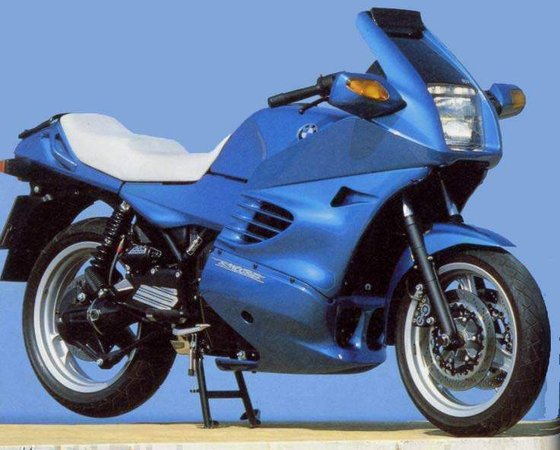
Owning a K 1100 RS today requires attention to its quirks. Here’s what to prioritize:
- Valve Adjustments: Every 10,000 km (6,200 mi), check the 0.15–0.20 mm (intake) and 0.25–0.30 mm (exhaust) clearances. Shimming required? Keep a feeler gauge handy.
- Fluids: Use SAE 10W-40 (3.75 L with filter) and DOT 4 brake fluid. The shaft drive’s 260 mL SAE 90 GL-5 oil needs changing every 20,000 km (12,400 mi).
- Tires: Stick to 2.2 bar (32 psi) front and 2.5 bar (36 psi) rear for optimal wear. Modern rubber like Michelin Road 6s transforms handling.
- Electronics: Bosch Motronic systems are robust, but corroded connectors can cause gremlins. Dielectric grease is your friend.
For upgrades, consider progressive fork springs, a taller windscreen, or heated grips—all available at MOTOPARTS.store.
Conclusion: A Timeless Contrarian
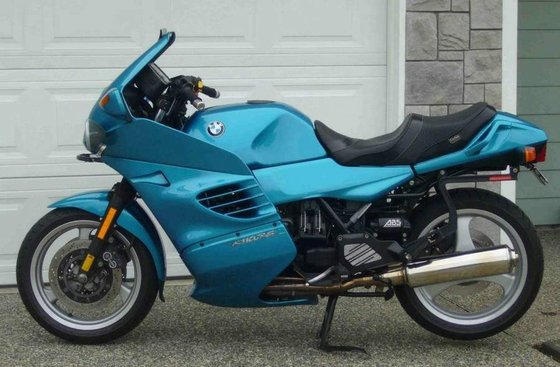
The BMW K 1100 RS isn’t a motorcycle that shouts for attention. It doesn’t dominate drag strips or Instagram feeds. What it does—effortlessly, reliably—is fuse grand-touring comfort with enough verve to keep Sunday rides exciting. Decades later, its quirks (vibrations, weight) feel endearing, like wrinkles on a well-traveled face.
For riders seeking a classic that still thrills, the Flying Brick remains a testament to BMW’s stubborn genius. And for those keeping theirs roadworthy? MOTOPARTS.store has every gasket, filter, and upgrade to ensure this ’90s icon flies for another 100,000 km.
Specifications sheet
| Engine | |
|---|---|
| Stroke: | Four-stroke |
| Max power: | 74 kW | 99.0 hp |
| Max torque: | 107 Nm |
| Fuel system: | Electronic fuel injection (Bosch Motronic) |
| Max power @: | 7500 rpm |
| Displacement: | 1093 ccm |
| Max torque @: | 5500 rpm |
| Configuration: | Inline |
| Cooling system: | Liquid cooled |
| Compression ratio: | 11.0:1 |
| Number of cylinders: | 4 |
| Dimensions | |
|---|---|
| Wheelbase: | 1555 mm (61.2 in) |
| Wet weight: | 268 |
| Seat height: | 800 mm (31.5 in) |
| Overall width: | 840 mm (33.1 in) |
| Overall height: | 1390 mm (54.7 in) |
| Overall length: | 2290 mm (90.2 in) |
| Ground clearance: | 165 mm (6.5 in) |
| Fuel tank capacity: | 22 L (5.8 US gal) |
| Drivetrain | |
|---|---|
| Gear Ratio: | 1st 4.50 / 2nd 2.96 / 3rd 2.30 / 4th 1.88 / 5th 1.61:1 |
| Final drive: | shaft |
| Transmission: | 5-speed |
| Maintenance | |
|---|---|
| Engine oil: | 10W40 |
| Brake fluid: | DOT 4 |
| Spark plugs: | NGK DR7EA |
| Spark plug gap: | 0.6 |
| Coolant capacity: | 3.0 |
| Forks oil capacity: | 0.75 |
| Engine oil capacity: | 3.75 |
| Gearbox oil capacity: | 0.85 |
| Final drive oil capacity: | 0.26 |
| Engine oil change interval: | Every 5000 km or 2 years |
| Valve clearance (intake, cold): | 0.15–0.20 mm |
| Valve clearance check interval: | 24,000 km |
| Valve clearance (exhaust, cold): | 0.25–0.30 mm |
| Recommended tire pressure (rear): | 2.5 bar (36 psi) solo / 2.9 bar (41 psi) with passenger |
| Recommended tire pressure (front): | 2.25 bar (33 psi) |
| Chassis and Suspension | |
|---|---|
| Frame: | Tubular space frame |
| Rear tire: | 160/60 z-18 |
| Front tire: | 120/70 z-17 |
| Rear brakes: | Single ∅285 mm disc, 1-piston caliper (ABS optional) |
| Front brakes: | 2 x ∅305 mm discs, 4-piston calipers (ABS optional) |
| Rear suspension: | Paralever monoshock |
| Front suspension: | ∅43 mm telescopic fork |



